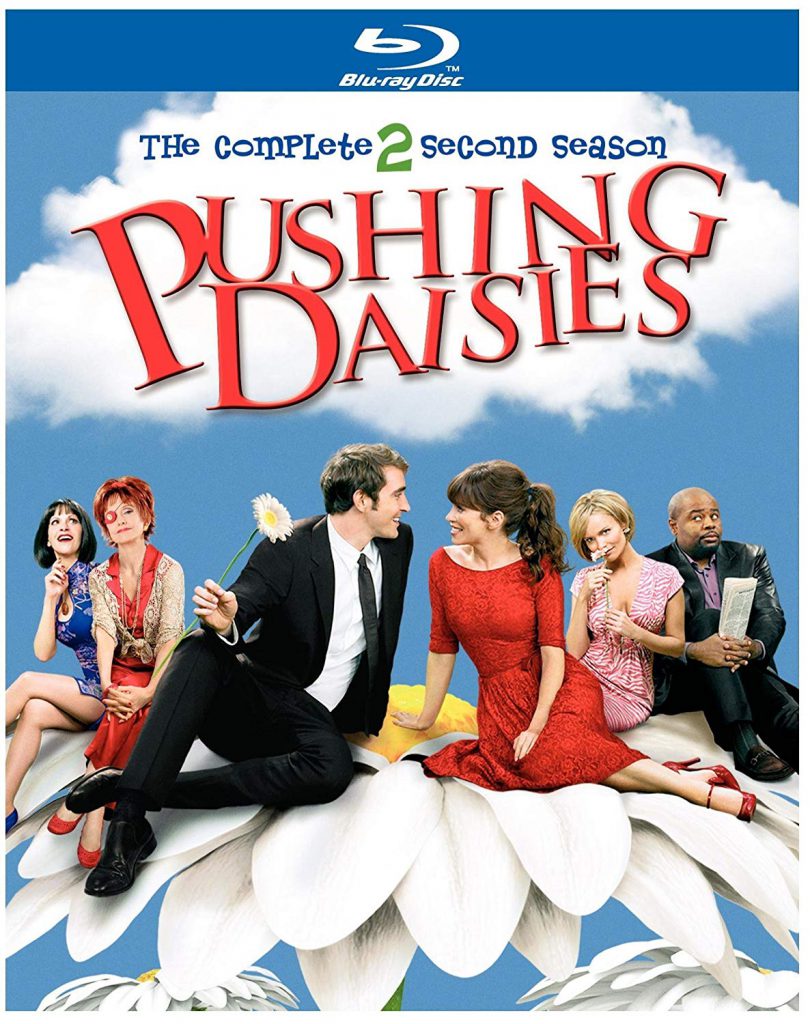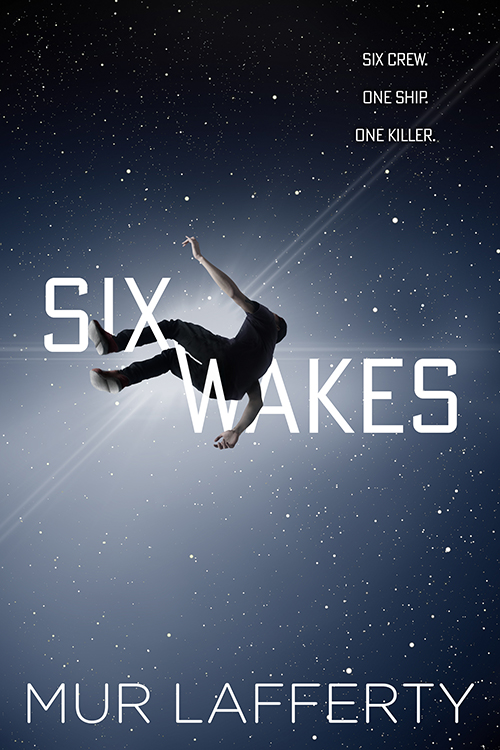
written by David Steffen
Pushing Daisies was a fantastical and whimsical murder mystery romance show that aired for 2 (both very short, the first one cut short by the writer’s strike) seasons between 2007 and 2009.
Ned (Lee Pace) is a piemaker, who lives a mostly quiet life, but who has a secret ability to reanimate the dead with a touch. If he touches any dead thing (plants, animals, humans, included), then it will come alive again no matter what condition it’s in. If he touches them again, they will be dead forever with no way to raise them again. If he leaves something alive for more than one minute, then some other alive thing in the near vicinity will die, something of a similar level of order of complexity (i.e. a small animal for a small animal, or a human for a human).
Ned didn’t know about this ability until his mother suddenly died when he was a child and he brought her back with a touch, and dead again when she touched him again. And he learned the other part of the rule that same day because his mother stayed alive again long enough to pay the consequence and the father of his best friend and neighbor Charlotte Charles (aka Chuck) (Anna Friel) died as a result, and she moved away to love with her aunts.
Ned has been working on the side to help private detective Emerson Cod (Chi McBride) solve murder cases. Ned’s abilities are very convenient for such a venture, because he can raise the murder victim and ask them some very quick questions before making them dead again, before there are consequences. But one such case (at the beginning of the series) is murdered tourist Charlotte Charles, and Ned doesn’t have the heart to lose her again, so he keeps her alive. They develop a romance, albeit an untraditional one since they can’t touch again on penalty of her death. She feels that she can’t tell her aunts Vivian and Lily (Ellen Greene and Swoosie Kurtz) that she’s alive. Ned feels he must keep his own secret from everyone except Emerson and Chuck, including his only employee, Olive (Kristin Chenoweth).
Despite the extremely dark premise, the show as a whole is relatively lighthearted in tone with odd and whimsical set and costume designs and clever dialog, and much of the show being centered around the awkward romance, and around the banter between Cod and the others. The premise is contrived, but if you overlook that and just look at how it’s used to structure the show, it’s a fun mystery to watch.
The second season, you could tell that the writers were working under threat of cancellation because the arcs are kindof muddied, longer arcs building and then suddenly resolving without much fanfare, and then shorter arcs without much sign of new larger arcs until the end when there’s a hasty wrapup. All in all, I think they did a pretty good job wrapping everything up with how this sort of thing all goes. The whole two seasons is only about the length of a normal season of a show, so it’s not a huge time commitment, but it is a lot of fun to watch.

 Six Wakes by Mur Lafferty is a science fiction mystery, one of the finalists for the Hugo Award for the Best Novel category of 2017.
Six Wakes by Mur Lafferty is a science fiction mystery, one of the finalists for the Hugo Award for the Best Novel category of 2017. Joyland is a mystery novel written by Stephen King and published in 2013 by Hard Case Crime.
Joyland is a mystery novel written by Stephen King and published in 2013 by Hard Case Crime.